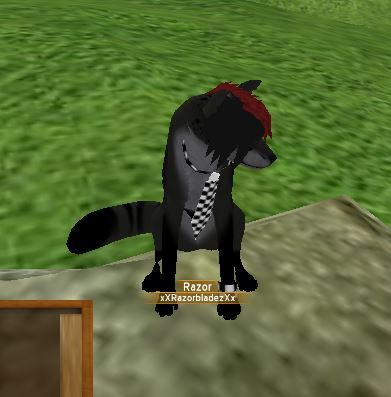
Use Ysondre's Tear to seal the portal at Dream Bough. Kill 6 Gordok Enforcers and 6 Gordok Ogre-Mages. Kill 16 Gordunni Ogres in the High Wilderness. Travel to Feralas and speak with Konu Runetotem at Camp Ataya. what do I do next, and how do I export my file, "Bark.Blend_Best!.Travel to Feralas and speak with Telaron Windflight at Dreamer's Rest.
Feral heart ogre engine how to#
I know to drag them into the OgreExporter and OgreMeshConverter, but I don't know how to export them.Īlso, Where do I put the OgreXMLConverter, OgreMeshUpgrader, etc.? I extracted them from WinRAR to downloads. I am quite slow, and I really want to get these animations put into feral heart. but can you help me step by step on how to do this? I didn't quite understand how to export my animations. Kojack wrote:There are three primary file types used by Ogre based games: Here we usually only know the base way it works, not how specific games might have changed things. Put these files where the game expects them.įor any more specific details on how feral hearts does things, you'll need to check on a forum for the game. The material file doesn't need converting, just the mesh.xml and skeleton.xml. Use the OgreXMLConverter to turn the xml files into binaries. It's for loading entire maps into ogre at once. (It will also give you a *.scene, but you can ignore it. This should give you a *.mesh.xml, *.skeleton.xml and *.material. I don't know how the game uses them though. Make sure the animations (and maybe bones) have the right names.

So the basic steps would be (I'm guessing, I've never tried modding feral hearts):
Feral heart ogre engine free#
I mention that because there's a heap of free models on the net made for them, Ogre can't load them though, it's a different format with a coincidental name. They are unrelated to Ogre though and not compatible. Something else to be careful of, the XNALara program and the game Tomb Raider also use models called *.mesh. It's very handy for testing things after you export them to make sure they are in an ogre compatible form. There's a great tool called OgreMeshy that can display ogre meshes. The same for animation, if the game expects an animation called "Walk" but you called it "Walking", then it will fail. If the engine wants a bone called "neck", you need it too. A simple object with no skeleton should just work (mostly), but if there's bones then there might be strict naming rules for them. Games usually have very strict rules about bones. If Feral Hearts uses Ogre earlier than that, it won't work (need to find an older copy of the tool). The tool I linked to above is version 1.7.2. Ogre won't load a mesh or skeleton that has a higher version number. Each ogre mesh and skeleton file have a version number added by the OgreXMLConverter.

You can use it by just dragging each xml file one at a time onto the OgreXMLConverter.exe file. There's an old version of the OgreXMLConverter here. It can turn *.mesh.xml and *.skeleton.xml into *.mesh and *.skeleton. You need to run them through the OgreXMLConverter. The blender exporter will give you the xml versions. They are used as a temporary step when exporting. These are xml based versions of the above files. It's textures, shaders, rendering modes, etc)īut these formats are a bit tricky for devs to support in tools.
Feral heart ogre engine plus#
*.skeleton (the bone structure used for skeleton animation, plus the animations themselves)

There are three primary file types used by Ogre based games:


 0 kommentar(er)
0 kommentar(er)
